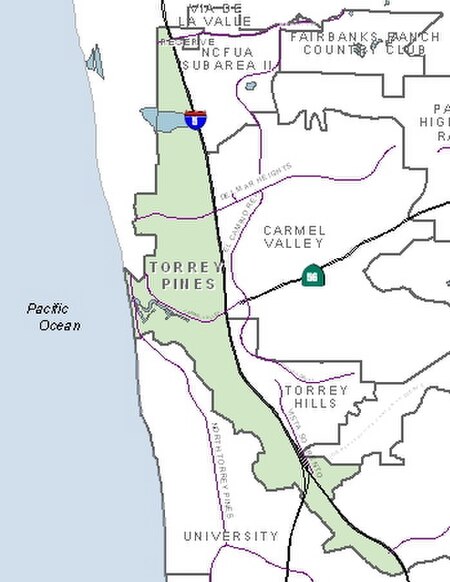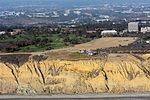Torrey Pines, San Diego
Edge cities in the San Diego metropolitan areaNeighborhoods in San Diego

Torrey Pines is a community of 2,600 acres (1,100 ha) in the northern coastal area of San Diego, California, residential with large areas of office space along I-5. The large office, retail, entertainment and academic facilities in University City a.k.a. UTC (over 9 million sq. ft. of office space), Sorrento Mesa/Sorrento Valley (also over 9 million sq. ft.), Torrey Pines (over 2.6 million sq. ft.), and Del Mar Heights/Carmel Valley (over 4.4 million sq. ft.), together form San Diego's "North City edge city", edge city being a major center of employment outside a traditional downtown.
Excerpt from the Wikipedia article Torrey Pines, San Diego (License: CC BY-SA 3.0, Authors, Images).Torrey Pines, San Diego
Genesee Avenue, San Diego Torrey Pines
Geographical coordinates (GPS) Address Nearby Places Show on map
Geographical coordinates (GPS)
| Latitude | Longitude |
|---|---|
| N 32.891713888889 ° | E -117.24030277778 ° |
Address
Genesee Avenue
Genesee Avenue
92093 San Diego, Torrey Pines
California, United States
Open on Google Maps






